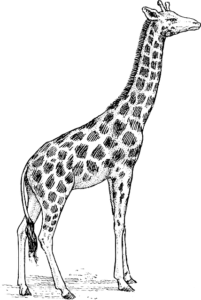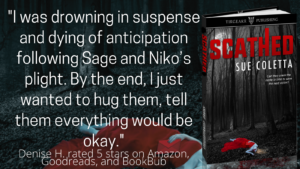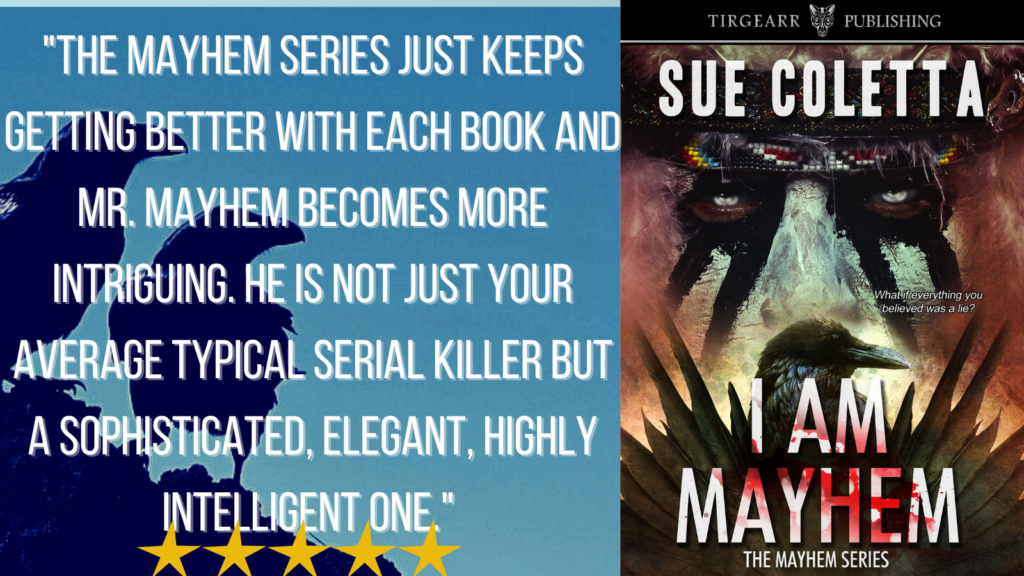 Deep down each of us have a strong but underused connection to the world around us.
Deep down each of us have a strong but underused connection to the world around us.
Consider the time when you sensed someone watching you, even if you couldn’t see them. Or the gut feeling, telling you something significant was about to happen. Or the intuitive, instinctive feeling that gave you the name of the person on the other end of the line before checking the caller ID.
If we learn how to tap into this sixth sense, we begin to notice when someone—dead or alive—is thinking about us, even when we’re physically apart.
Telepathic communication explains why, when you randomly thought of a friend and she texted you the next day. Or that time when you spontaneously called your third cousin, and he said, “Oh em gee, I was just thinking about you!”
Writers are especially attuned to the “little voice” inside us.
Some are more intuitive than others, but we all have an underutilized sixth sense. Once we learn its power and how to use it, new doorways open up, doorways that enhance our writing.
The more we open up to the possibility of telepathy, the more we’ll start to notice the messages from our spirit guides and ancestors, and the synchronicities or coincidences that have always been present in our lives.
The Natural World thrives on telepathic communication.
An animal’s survival depends on it. If you’ve ever wondered how one species warns another about potential threats, telepathy answers this question. And humans — as members of the Natural World — can tap into that same energy.
The notion of telepathic communication first intrigued me as a way to chat with animals, wild and domestic. Because when we watch and listen to animals, they help us reach our full potential. Animals enrich the mind, body, and soul. They’re sentient, intuitive beings who communicate with us in many ways. Body language, vocals, and telepathy, whether we’re cognizant of it or not.
Think about this: Most animals know more about their environment than you or I ever will.
An intuitive exchange with any animal — cats, dogs, guinea pigs, crows — begins the same way. First, with physical body cues. Then with the silent language of love.
So, how can we telepathically communicate with animals?
Step 1: Rest your hands over your heart and practice deep breathing exercises.
Step 2: Once you’re relaxed, pay attention to your heart, to your soul, and feel the gravity of your love for the animal.
Step 3: Express your love for that animal by visualizing a soft beam of light, a tether connecting the two of you.
Step 4: Silently or vocally ask the animal for permission to telepathically communicate with them.
Step 5: If you don’t sense any reluctance, express how you’re open to receiving messages in return. Keep it light in the beginning and progress deeper once you build trust, confidence, and strengthen your bond.
Keep in mind, animals live in the moment. They’re not distracted by the phone, the to-do list, or regret. And so, you must also be in the present moment to connect with them.
The only obstacle is you.
Trust the flow, the energetic pulse of life. Align with, not against, this flow. By blocking out all distractions, the energy exchanges between you and animals will occur effortlessly. You are in the present, anchored by love and grace, and coming from a place of neutrality. You are part of the Natural World, connected across space and time.
The same principals apply to human-to-human telepathic communication. Both parties must be willing participants. Don’t use this life skill for evil (unless you’re targeting fictional characters).
Remember These Three Simple Truths
- We are all part of divine consciousness.
- Love creates alignment with all creation.
- We all have the ability to listen with our heart.
When we refocus on lowering the frequency of emotions — fear, self-doubt, anxiety — we raise our cognition, enhance the vibration of our energy, we align with nature. Animals are drawn to bright inner lights, and therefore will be enthusiastic about communicating with you.
That’s all well and good, Sue, but how does that help our writing?
Glad you asked. 😉
In On Writing, Stephen King provides the perfect example of telepathy and writing.
“Telepathy, of course. It’s amusing when you stop to think about it—for years people have argued about whether or not such a thing exists—and all the time it’s been right there, lying out in the open like Mr. Poe’s The Purloined Letter. All the arts depend on telepathy to some degree, but I believe that writing offers the purest distillation.”
What does the quote mean?
The best way to think about writing is the process of transferring a mental image from your mind to the mind of a reader. As writers, we envision scenes, settings, characters, etc. Our job is to transfer that mental image to the page for the reader to experience later.
Sounds a lot like telepathy, doesn’t it? Because it is!
Hence why writing coaches tell us to envision our ideal reader, carrying that image with us while writing. The trick is learning what images to include and what to leave out. Hint: Less is more.
Want to hear something bizarre?
While writing this post in Word, the document kept disappearing. One second it’d be on my screen, gone the next. And I had three other documents open at the time. The other two stayed on the screen. Coincidence? You tell me.

Releases tomorrow! Preorder on Amazon for $1.49 before my publisher raises the price.
She may be paranoid, but is she right?
A string of gruesome murders rocks the small town of Alexandria, New Hampshire, with all the victims staged to resemble dead angels, and strange red and pink balloons appearing out of nowhere.
All the clues point to the Romeo Killer’s return. Except one: he died eight years ago.
Paranoid and on edge, Sage’s theory makes no sense. Dead serial killers don’t rise from the grave. Yet she swears he’s here, hungering for the only angel to slip through his grasp—Sage.
With only hours left to live, how can Sage convince her Sheriff husband before the sand in her hourglass runs out?

 Please excuse my absence over the last 7-10 days while I was on deadline. I’m usually a better multitasker. *sigh*
Please excuse my absence over the last 7-10 days while I was on deadline. I’m usually a better multitasker. *sigh*
 Fictional truth is never quite as clear as it seems on the surface. Deceptiveness boils down to manipulation, disguise,
Fictional truth is never quite as clear as it seems on the surface. Deceptiveness boils down to manipulation, disguise,  Zoosemiotics is the study of animal communication, and it’s played an important role in the development of ethology, sociobiology, and the study of animal cognition. Writers can also learn from zoosemiotics. Think characterization and scene enhancement.
Zoosemiotics is the study of animal communication, and it’s played an important role in the development of ethology, sociobiology, and the study of animal cognition. Writers can also learn from zoosemiotics. Think characterization and scene enhancement. Keep in mind, a dog could use more than one response at a time. Hence why it’s important to analyze the entire dog, not just one body cue (the same applies to characters).
Keep in mind, a dog could use more than one response at a time. Hence why it’s important to analyze the entire dog, not just one body cue (the same applies to characters).
 Bears can kill with one strategically placed swat of the paw, but they have terrible eyesight.
Bears can kill with one strategically placed swat of the paw, but they have terrible eyesight.



 Using sharp claws on their fore-flippers, seals punch out 10-15 breathing holes in the ice and maintain the openings all winter but using these holes can mean sudden death if a hungry polar bear is nearby.
Using sharp claws on their fore-flippers, seals punch out 10-15 breathing holes in the ice and maintain the openings all winter but using these holes can mean sudden death if a hungry polar bear is nearby. Skunks use an overpowering odor for defense and can spray six times in succession, but once their foul-smelling liquid runs out it takes up to 10-14 days to refill the glands.
Skunks use an overpowering odor for defense and can spray six times in succession, but once their foul-smelling liquid runs out it takes up to 10-14 days to refill the glands.
 Gray whales can submerge for 15 minutes at a time, but a mother’s calf can only hold its breath for 5 minutes, so when under attack by orcas the mother will flip onto her back to create a platform for her baby to lay on, but Momma can’t breathe upside down.
Gray whales can submerge for 15 minutes at a time, but a mother’s calf can only hold its breath for 5 minutes, so when under attack by orcas the mother will flip onto her back to create a platform for her baby to lay on, but Momma can’t breathe upside down. Have you ever written from the perspective of a character you hated?
Have you ever written from the perspective of a character you hated?  A novel’s opening chapter makes a promise, a secret vow that says, “This is what you can expect from me.”
A novel’s opening chapter makes a promise, a secret vow that says, “This is what you can expect from me.”
 When I’m not reading or watching true crime or nature/wildlife documentaries, I search for net-streaming series based on novels. Why? Because they’re the next best thing to reading, if the series preserves the craft beneath the storyline. Harlan Coben’s STAY CLOSE on Netflix is the perfect example.
When I’m not reading or watching true crime or nature/wildlife documentaries, I search for net-streaming series based on novels. Why? Because they’re the next best thing to reading, if the series preserves the craft beneath the storyline. Harlan Coben’s STAY CLOSE on Netflix is the perfect example. Those dang pesky buggers that sneak into first drafts and weaken the writing are called filler words and phrases—also known as fluff.
Those dang pesky buggers that sneak into first drafts and weaken the writing are called filler words and phrases—also known as fluff.
 Misdirection is the intentional deflection of attention for the purpose of disguise, and it’s a vital literary device. To plant and disguise a clue so the reader doesn’t realize its importance takes time and finesse.
Misdirection is the intentional deflection of attention for the purpose of disguise, and it’s a vital literary device. To plant and disguise a clue so the reader doesn’t realize its importance takes time and finesse.
 Character misdirection is when the protagonist (and reader) believes a secondary character fulfills one role when, in fact, he fulfills the opposite.
Character misdirection is when the protagonist (and reader) believes a secondary character fulfills one role when, in fact, he fulfills the opposite. Female killers are often portrayed as caricatures: Black Widows, Angels of Death, or Femme Fatales. But the real stories of these women are much more complex. In Pretty Evil New England, true crime author Sue Coletta tells the story of these five women, from broken childhoods to first brushes with death, and she examines the overwhelming urges that propelled these women to take the lives of more than one-hundred innocent victims. If you enjoy narrative nonfiction/true crime,
Female killers are often portrayed as caricatures: Black Widows, Angels of Death, or Femme Fatales. But the real stories of these women are much more complex. In Pretty Evil New England, true crime author Sue Coletta tells the story of these five women, from broken childhoods to first brushes with death, and she examines the overwhelming urges that propelled these women to take the lives of more than one-hundred innocent victims. If you enjoy narrative nonfiction/true crime,